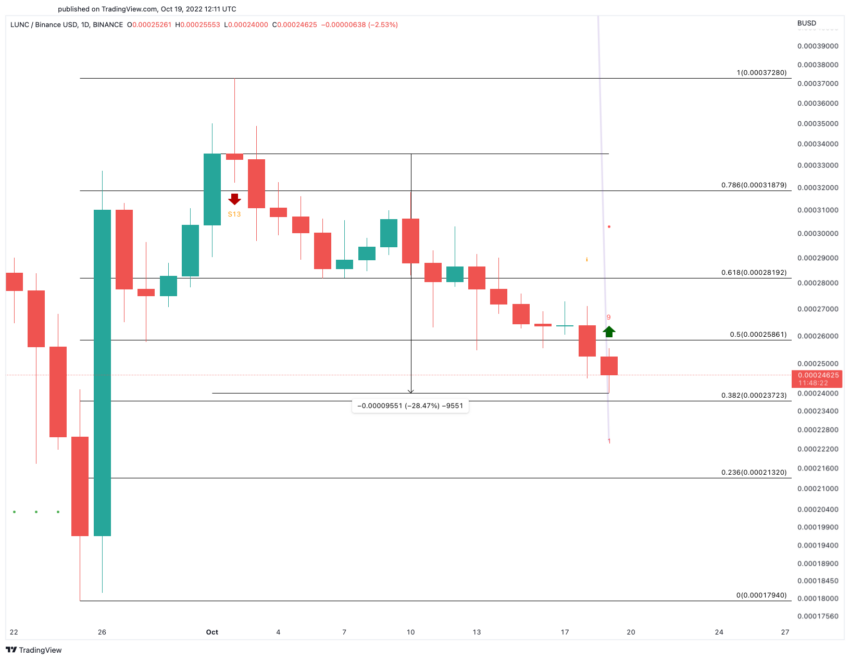Terra Luna Classic community voted to reduce the LUNC tax burn rate from 1.2% to 0.2%, which could now take nearly 29 years to take 10 billion tokens out of circulation.
With the passage of Proposal 5234, the Terra LUNA Classic community chose to reduce the LUNC tax burn rate for on-chain transactions from 1.2% to 0.2%.
The tax burn is a mechanism that has been put in place to bolster the crypto price by destroying 10 billion LUNC from the total supply. The change is expected to take effect at 12:50 (UTC) on Oct. 19.
New Terra LUNA Classic Tax Burn
The decision to change the LUNC tax burn rate received an enthusiastic response from the Terra LUNA Classic community. Many praised the grassroots efforts behind the proposal.
With the passage of the initiative by the Terra LUNA Classic governance, Twitter user Akujiro highlighted that community members had brought it forward. Akujiro said the proposal had a vote rate of 82% and it included first-time participation from the crypto exchange KuCoin.
“We are decentralized, I encourage everyone to start discussions and take action,” Akujiro concluded.
Meanwhile, Twitter user 4lex_4sh4w_TR also emphasized the “amazing community engagement,” citing an 83% participation rate. This milestone was achieved despite roughly a quarter of validators not voting. According to their figures, some 92% of those who did not abstain voted Yes.
In response to the passage of the community initiative, crypto exchange Binance announced that it would make updates. Deposit and withdrawal fees will change when the LUNC tax burn mechanism goes live.
“Binance will reduce the 1.2% consolidation fee for all LUNC and USTC deposits received by Binance to 0.2%. Please note that LUNC and USTC deposits to Binance are still subject to the withdrawal fees charged by other exchanges or platforms, where applicable. Users will receive the withdrawal amount minus withdrawal fees charged by Binance and the 0.2% tax burn,” reads the announcement.
Nearly 30 Years to Burn 10 Billion LUNC
At the lower rate of reduction now introduced, the overall goal of the LUNC tax burn mechanism is now scheduled to take much longer. According to an estimate from LUNC Burner, at a LUNC tax burn rate of 0.2%, Terra LUNA Classic will achieve its goal of destroying 10 billion LUNC in roughly 28 years and 9 months.
Data from the website detailed that roughly 22,428,000,000, or some 0.325756% of LUNC total supply, had been burned to date. The total supply is calculated as the on-chain supply with the amount of LUNC burned subtracted. It currently stands at 6,907,072,876,045, according to CoinGecko.
LUNC Price Action
LUNC price struggles, retracing nearly 29% since Oct. 1. The Tom DeMark (TD) Sequential indicator presented a buy signal on Terra LUNA Classic price daily chart. The bullish formation suggests that if LUNC price can hold above $0.00024, it could rebound to $0.00026 or even $0.00028.

If LUNC price fails to hold above the $0.00024 support, it could invalidate the bullish formation. This can result in a downswing to $0.00021.
Disclaimer
In adherence to the Trust Project guidelines, BeInCrypto is committed to unbiased, transparent reporting. This news article aims to provide accurate, timely information. However, readers are advised to verify facts independently and consult with a professional before making any decisions based on this content. Please note that our Terms and Conditions, Privacy Policy, and Disclaimers have been updated.


